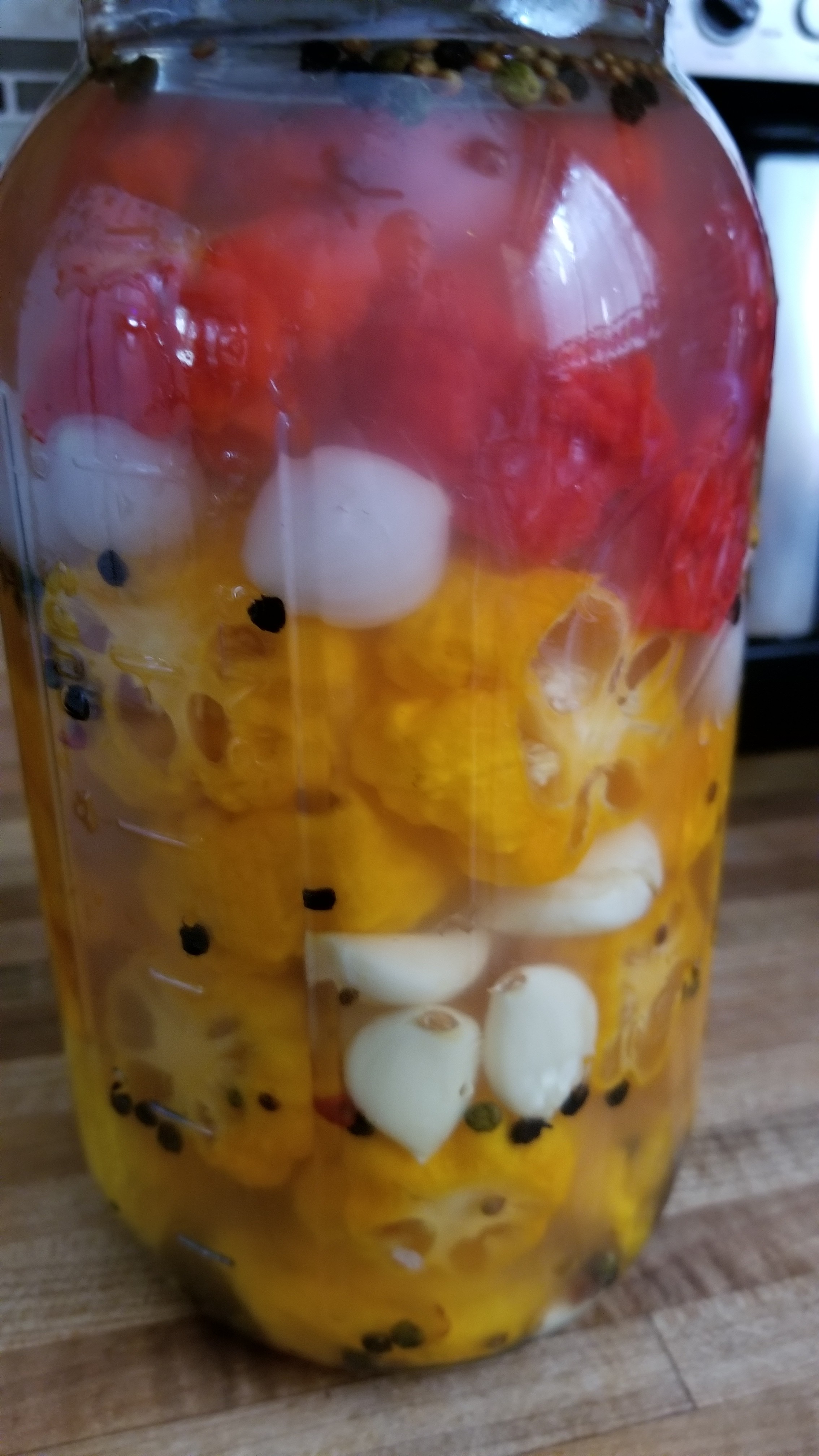-
If you have a question about commercial production or the hot sauce business, please post in Sauce Biz.
You are using an out of date browser. It may not display this or other websites correctly.
You should upgrade or use an alternative browser.
You should upgrade or use an alternative browser.
fermenting Ferment attempt
- Thread starter alkhall
- Start date
if you want them to ferment faster chop them up a little more. it'll get the action moving.
the "spent" lactobacillus will fall to the bottom. no worries about that. the part to be concerned on if there is any green growth on top. often you may find kahm yeast on top. its white and not bad exactly. just remove it before processing as it is bitter to taste. as always let your nose guide you. if it smells bad it probably is.
the "spent" lactobacillus will fall to the bottom. no worries about that. the part to be concerned on if there is any green growth on top. often you may find kahm yeast on top. its white and not bad exactly. just remove it before processing as it is bitter to taste. as always let your nose guide you. if it smells bad it probably is.
BDASPNY said:if you want them to ferment faster chop them up a little more. it'll get the action moving.
the "spent" lactobacillus will fall to the bottom. no worries about that. the part to be concerned on if there is any green growth on top. often you may find kahm yeast on top. its white and not bad exactly. just remove it before processing as it is bitter to taste. as always let your nose guide you. if it smells bad it probably is.
Thanks, but how do I know when they are 'done'?
alkhall said:
Thanks, but how do I know when they are 'done'?
Depends on how long you want to ferment for.
.
1. You'll see bubble formations between the first couple of days and end of the first month, usually. This should last about a week. After this, the ferment is "done." During this period the container will need to be "burped," in which you crack the lid just enough to release gases, then rapidly close it to prevent air introduction. Depending on what you're fermenting you may not see bubbles, especially if the process is slow; i.e. if you used tap-water instead of distilled water, cooked/roasted the material you're fermenting, etc., anything that can slow the process by killing more lactobacillius. You can tell you're actively fermenting in this case by the lid of your jar starting to bulb, letting you know CO2 is indeed building up and it needs to be burped, or you can press on the lid and feel it being at a higher pressure.
You could process it at this point. Most people don't. I have a set I'm planning on processing after just fermentation. I started it 3 days ago and hope to have it processed next weekend, but that's unlikely because it's not active yet.
2. You age it. Simply put, let it sit in the closed container after fermentation is done. The typical advice is to allow it to age for at least 3 months, but the greatest successes seem to be from those allowed to age for years. However long you like, really. I've done 2, 3, 6, and 9 month ferments, and the 9 month indeed was better than the 3 month. However, any time you add introduces more risk that you get nasties. Do this gig long enough and you will have entire jars you have to just pitch. And by "long enough" I mean, "pretty much do this at all." Even if you're rigorous in cleanliness/boiling your gear it can happen, and will happen. I prefer to use multiple 32oz jars instead of the huge containers some people like so I minimize how much I have to toss, and it lets me process a little at a time, letting other jars sit several months longer while I still get to taste-test early batches.
As for grayish coloration/cloudiness:
If you're not using a Pickling/Canning Salt, you can see this occur. This is okay.
What you need to worry about is nasties (mold) forming on the surface - or in the jar, I suppose.
the post above is great and covers just about all you need to know.
as to when its done that's very much up to you. 30 days is most common. its the minimum i wait.
i do suggest getting proper airlocks and weights. it helps to minimize any nasties by allowing the gases to escape but keep out oxygen out. the weights keep the solids under the brine so they don't get any mold.
as to when its done that's very much up to you. 30 days is most common. its the minimum i wait.
i do suggest getting proper airlocks and weights. it helps to minimize any nasties by allowing the gases to escape but keep out oxygen out. the weights keep the solids under the brine so they don't get any mold.

